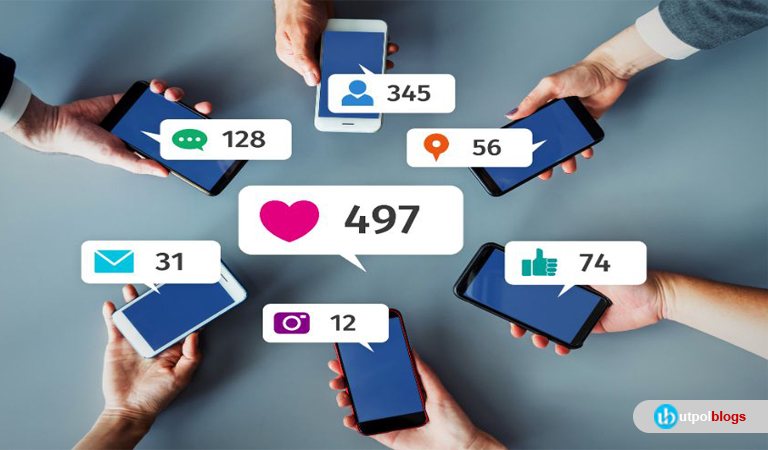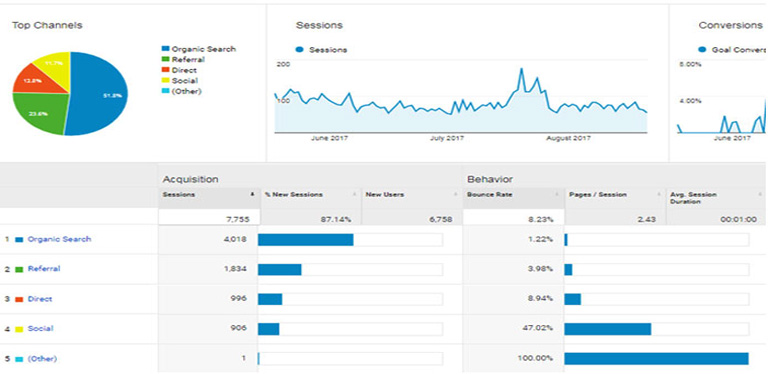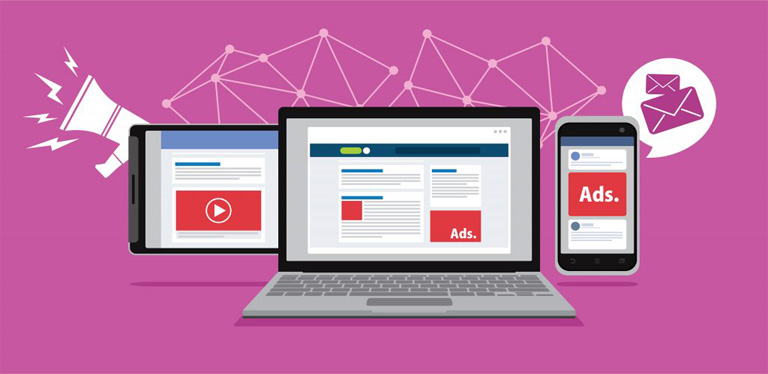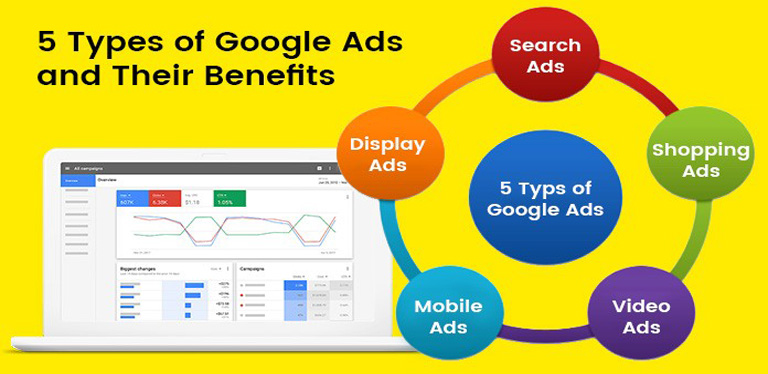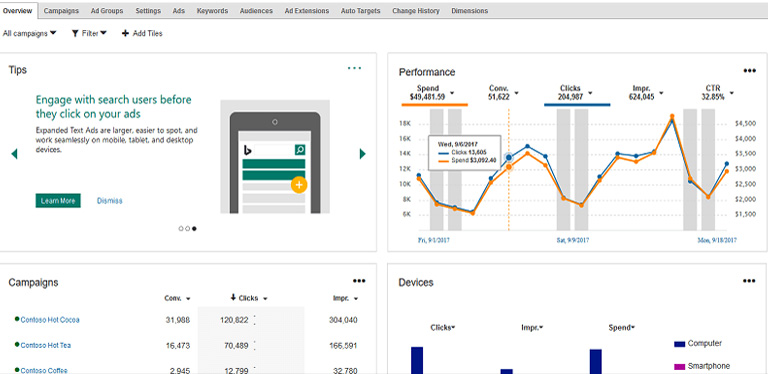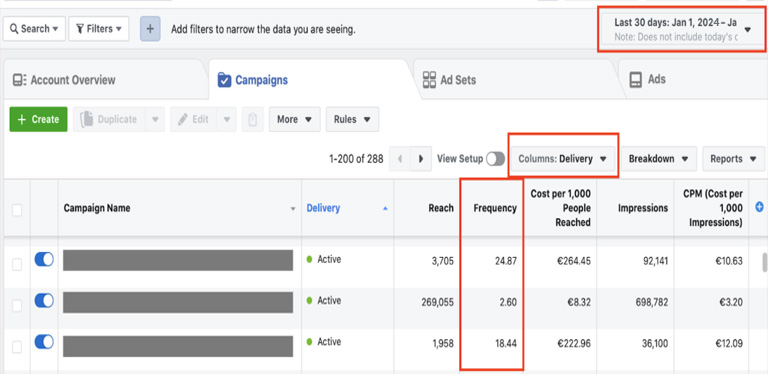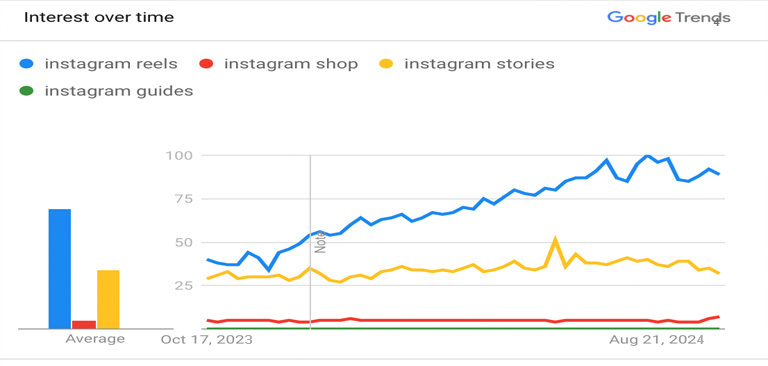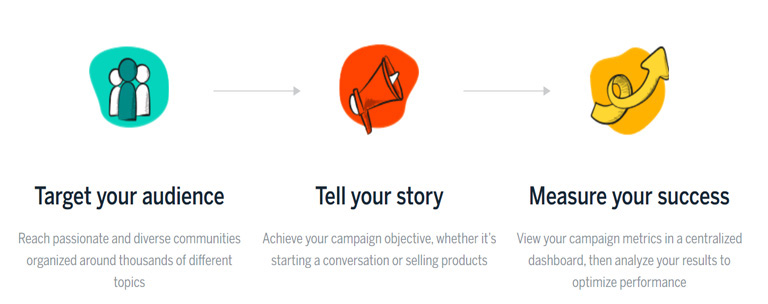Have you ever wondered where all the visitors to your website are coming from? Understanding how to generate traffic sources is crucial for successful digital marketing strategies. A traffic source refers to the origin of the online users who are visiting your website. It can be direct, organic, referral, or from campaigns such as paid search and social media ads.
By identifying and analyzing your traffic sources, you can gain valuable insights into the effectiveness of your marketing efforts. Knowing which sources are driving the most traffic to your site can help you focus your resources and optimize your strategies for better results.
Whether you are looking to increase brand awareness, drive sales, or improve search engine rankings, understanding your traffic sources is a key component of any successful online presence. Let’s dive deeper into the different types of traffic sources and how you can leverage them to achieve your digital marketing goals.
Definition of traffic source Importance of tracking traffic sources Types of traffic sources (organic, direct, referral, social, paid) How to analyze traffic sources Tips for optimizing traffic sources
Definition of traffic source
A traffic source is a term commonly used in the world of digital marketing and website analytics. In simple terms, it refers to where your website visitors are coming from. In other words, a traffic source is the place that drives someone to click on your website link and land on your webpage. There are different types of traffic sources that can bring visitors to your website. One of the most common sources is organic traffic. Organic traffic comes from search engines like Google, Bing or Yahoo.
When someone types a search query related to your website content and finds your website in the search results, they click on the link and get organic traffic. Another type of traffic source is direct traffic. Direct traffic occurs when someone types your website URL directly into their browser or accesses your website through a bookmark.
This means they are already familiar with your website and are looking for it intentionally. Referral traffic is another important source of website visitors. Referral traffic comes from other websites linking to your website. When someone clicks on a link from website and lands on your webpage, it is considered referral traffic.
This type of traffic can be incredibly valuable because it often comes from websites that already have a similar target audience to yours Social media traffic is a significant traffic source for many websites.
How to generate traffic sources for digital marketing:
Social media platforms like Facebook, Twitter, Instagram, and LinkedIn can drive significant traffic to your website if you have a strong presence and engage effectively with your audience. Paid traffic is another category of traffic sources that pay to drive visitors to your website.
These include methods such as pay-per-click advertising, display advertising, sponsored content and social media advertising. While paid traffic can be a great way to quickly increase your website visibility, it can also be expensive and may not always result in high-quality leads.
Understanding your website’s traffic sources is crucial to improving your digital marketing strategy By analyzing where your visitors are coming from, you can better tailor your marketing efforts to target the sources that drive the most traffic and leads to your website. It can help you optimize your marketing budget, improve your website’s performance, and ultimately increase your conversions and revenue.
In conclusion, a traffic source is a source of visitors to your website.
Whether they come from search engines, direct traffic, referrals, social media or paid advertising, knowing where your visitors are coming from can help you make informed decisions to improve your website’s performance and drive more traffic and leads.
By analyzing your website’s traffic sources, you can better understand your audience, target your marketing efforts, and ultimately increase your online presence.
Importance of tracking traffic sources
Tracking traffic sources is a crucial aspect of any successful marketing strategy. Understanding where your website traffic is coming from allows you to make informed decisions about how to allocate your resources and optimize your online presence. One of the key benefits of tracking traffic sources is that it provides valuable insights into the effectiveness of your marketing efforts.
By knowing which channels are driving the most traffic to your site, you can focus your efforts on those areas that are generating the highest return on investment.
For example, if you find that a large percentage of your traffic is coming from social media platforms, you can allocate more resources to building and maintaining a strong social media presence.
Additionally, tracking traffic sources can help you identify new opportunities for growth. By monitoring your traffic sources, you may discover untapped segments of your target audience that you can then target with specific marketing campaigns.
For example, if you notice a spike in traffic from a particular referral source, you can investigate further to determine what is driving that traffic and adapt your marketing strategy accordingly.
Furthermore, tracking traffic sources can help you optimize your website for better performance.
By analyzing where your traffic is coming from, you can identify any potential bottlenecks or issues that may be hindering your site’s performance. For instance, if you notice a high bounce rate from a particular traffic source, you can investigate why visitors are leaving your site and make necessary improvements to keep them engaged.
Digital advertising campaigns:
In addition to assessing the effectiveness of your marketing efforts, tracking traffic sources can also provide valuable insights into your target audience. By understanding where your visitors are coming from, you can tailor your content to better meet their needs and preferences.
For instance, if you find that a significant portion of your traffic is coming from mobile devices, you can optimize your site for mobile users to improve their experience and increase engagement.
Moreover, tracking traffic sources can help you measure and track the success of your digital advertising campaigns. Monitors which sources are driving traffic to your site. You can determine which campaigns are performing well and which need to be adjusted or discontinued.
This data can help you make informed decisions about where to allocate your advertising budget for maximum impact. Additionally, tracking traffic sources can assist you in building partnerships and collaborations with other websites or businesses.
By identifying referral sources that are driving traffic to your site, you can reach out to those websites or businesses to explore potential collaboration opportunities. This can help you expand your reach and tap into new audiences that you may not have been able to reach otherwise.
In conclusion, tracking traffic sources is a vital component of any digital marketing strategy. By monitoring where your website traffic is coming from, you can gain valuable insights into the effectiveness of your marketing efforts, identify new growth opportunities, optimize your website performance, understand your target audience better, measure the success of your advertising campaigns, and build partnerships with other websites or businesses.
Ultimately, tracking traffic sources can help you make data-driven decisions that will lead to increased traffic, engagement, and conversions for your website.
How to analyze traffic sources
Analyzing your traffic sources is an important aspect of understanding how visitors are finding and interacting with your website. By identifying where your website traffic is coming from, you can make informed decisions about how to optimize your online presence and drive more high-quality traffic to your site.
One of the first steps in analyzing your traffic sources is to look at your website analytics Tools like Google Analytics provide valuable insight into where your traffic is coming from, such as organic search, direct traffic, referral traffic, social media and paid ads.
Organic search traffic includes visitors who found your website through search engines like Google or Bing. Traffic comes from people searching for specific keywords that are related to what you offer.
By analyzing organic search traffic, you can identify which keywords are bringing the most traffic to your site and optimize your content to better target those keywords.
Direct traffic refers to visitors who typed your website directly into their browser’s address bar or clicked on a bookmark to access your site.
By analyzing direct traffic, you can gain insight into the effectiveness of your offline marketing efforts or brand awareness. By analyzing referral traffic, you can identify which websites are bringing the most visitors to your site and partner with these sites to increase traffic. You can analyze the quality of referral traffic by looking at metrics like bounce rate and time on site.
By analyzing social media traffic, you can determine which platforms are driving the most traffic to your site and tailor your content and messaging to better engage your social media audience.
Paid Ads:
Paid Ads refers to traffic that comes from paid marketing campaigns such as Google Ads or Facebook Ads. By analyzing paid traffic, you can measure the effectiveness of your ad campaigns and optimize your ad spend to drive more high-quality traffic and conversions.
Once you’ve identified your various traffic sources, it’s essential to dive deeper into each source to understand how visitors from each channel are interacting with your website.
For example, you can analyze metrics like bounce rate, time on page, and conversion rate to determine the quality of traffic from each source. By analyzing these metrics, you can identify which traffic sources are driving the most engaged visitors to your site and focus your efforts on optimizing those channels.
For example, if you see that organic search traffic has a high conversion rate, you can invest more resources in search engine optimization (SEO) to drive more organic traffic to your site. In conclusion, analyzing your traffic sources is crucial to understand how visitors are finding and interacting with your website.
By identifying where your traffic is coming from and analyzing key metrics, you can make informed decisions about how to optimize your online presence and drive more high-quality traffic to your site.
Native Ads?
In today’s digital age, advertising has become an essential part of marketing strategies for businesses looking to reach a wider audience. With the rise of ad blockers and banner blindness, traditional forms of online advertising like display ads and pop-ups are becoming less effective. This has led to the growth of a new form of advertising known as native ads.
Native ads are a type of online advertising that seamlessly blends in with the content of the website or platform they appear on. They mimic the look and feel of the site on which they are placed, making them less obtrusive and more engaging for the user. Unlike traditional banner ads, native ads do not disrupt the user’s browsing experience or interrupt their flow of reading.
One of the key characteristics of native ads is that they are non-disruptive and non-intrusive. They are designed to fit in with the natural environment of the website, mimicking the style and format of the content around them.
This makes them less likely to be ignored or blocked by users, resulting in higher engagement and click-through rates.
Native ads can take many forms, including sponsored content, promoted listings, in-feed ads, and recommendation widgets. Sponsored content is typically articles or videos that are created by an advertiser but appear to be organic content to the user.
Promoted listings are ads that appear in search results or on e-commerce platforms, while in-feed ads are integrated into the content feed on social media platforms or news websites.
Benefits of Using Native Ads
Native advertising has become an increasingly popular marketing strategy in recent years, and for good reason. There are numerous benefits to using native ads that can help businesses reach and engage with their target audience in ways that traditional advertising methods simply cannot match.
One of the key benefits of using native ads is that they blend seamlessly into the content that the user is already consuming. Unlike more traditional banner ads or pop-ups, which can be intrusive and disruptive, native ads are designed to mimic the look and feel of the surrounding content.
This helps to create a more natural and less jarring user experience, which can ultimately lead to higher levels of engagement and interaction.
Another major benefit of native ads is their ability to drive higher levels of engagement and interaction with users. Because native ads are integrated into the content that users are already consuming, they are more likely to capture the user’s attention and interest.
This can lead to higher click-through rates, increased time spent on the content, and ultimately, higher levels of conversion and ROI for the advertiser. Native ads also have the benefit of being more trustworthy and less obtrusive than traditional forms of advertising. Studies have shown that consumers are more likely to trust content that is seamlessly integrated into the user experience, rather than being presented as a separate and distinct ad.
By using native ads, businesses can build trust with their audience and create more meaningful connections with potential customers.
Native ads Advantage:
Furthermore, native ads have the advantage of being highly targeted and personalized. This level of personalization can help businesses to reach the right audience with the right message at the right time, leading to higher levels of engagement and conversion. In addition, native ads can also help businesses to reach new audiences and expand their reach.
Businesses can reach more people and get new customers by leaving their ads on popular websites and platforms. This strategy helps their brand express their greater visitors. More customers are likely to arrive at different corners of the Internet. Businesses can expand their customer base and increase sales.
This can help businesses to grow their customer base and increase their market share. Native ads are great because people tend to share and recommend them more often. This means that the ad gets seen by more people, giving the advertiser more visibility. Since native ads look like regular content, people are more likely to share them without feeling like they’re pushing a product on their friends. This means that if the ad is interesting and useful, people are more likely to pass it on to others who may find it helpful too.
This can help businesses to reach a wider audience and increase brand awareness in a more natural and authentic way.
In conclusion, native ads offer a wide range of benefits for businesses looking to reach and engage with their target audience in today’s increasingly digital world. From higher levels of engagement and interaction to increased trust and personalization, native ads provide a powerful and effective marketing tool that can help businesses to achieve their goals and drive results.
What are banner ads?
Banner ads are a form of online advertising that has been around for quite some time. You’ve probably seen them countless times while browsing the internet. They are the rectangular advertisements that typically appear at the top, bottom, or sides of a webpage. Banner ads can vary in size, shape, and design, but they all have one thing in common – they’re designed to grab your attention and entice you to click on them.
These ads are usually made up of an image, text, and a call-to-action button. The image is often eye-catching and relevant to the product or service being promoted.
The text provides a short and snappy message to communicate the benefits of clicking on the ad. And the call-to-action button is where users can click to learn more or make a purchase.
Banner ads can be found on a wide range of websites, from news sites and blogs to social media platforms and e-commerce sites. They are a popular choice for advertisers because they can reach a large audience and are relatively affordable compared to other forms of online advertising. Banner ads are also effective at driving traffic to a website or generating leads for a business.
Benefits of using banner ads
One of the main benefits of banner ads is their ability to increase brand awareness. By placing banner ads on popular websites or social media platforms, businesses can extend their reach and attract potential customers who may not have been previously familiar with their brand.
These visual ads can help to create a strong brand presence and recognition among internet users, ultimately leading to increased visibility and credibility for the business.
In addition to boosting brand awareness, banner ads can also help drive traffic to your website. When users click on a banner ad, they are directed to a specific landing page or website where they can learn more about the products or services being promoted.
This increased traffic can result in higher conversion rates and sales for the business, as users are more likely to make a purchase or take a specific action after clicking on a compelling banner ad.
What are Google Ads?
Google Ads, formerly known as Google Ad Words, is a powerful online advertising platform that allows businesses to reach potential customers on Google’s search engine results pages, as well as on other Google-affiliated websites and platforms. It is a pay-per-click (PPC) advertising platform, which means that advertisers only pay when someone clicks on their ad.
One of the key features of Google Ads is targeting ability. Advertisers can target their ads based on a variety of factors, such as keywords, location, language, device, and even specific websites.
This allows businesses to reach their target audience with precision and relevance, increasing the likelihood of driving conversions and generating a positive return on investment.
Text ads appear above and below normal Google ads and Google search results pages. Image ads are great because they catch your eye with cool pictures and stuff. Plus, they can show up on tons of websites and apps through the Google Display Network. Imagine your ad popping up all over the internet!
Benefits of using Google Ads
In today’s digital age, online advertising has become an important tool for businesses looking to reach audiences and drive sales.
One of the most popular online advertising platforms is Google Ads, which allows businesses to create and display ads on Google’s search engine results pages and across its vast network of partner websites.
From small businesses to multinational corporations, Google Ads offers a range of benefits that can help businesses of all sizes increase their online visibility and drive traffic to their website.
One of the key benefits of using Google Ads is its ability to target specific audiences based on factors such as location, demographics, and online behavior.
This targeted approach helps businesses reach the right people at the right time, increasing the likelihood of generating qualified leads and conversions. Additionally, Google Ads provides businesses with detailed analytics and reporting tools that allow them to track the performance of their ads in real-time.
By measuring metrics such as click-through rate, conversion rate, and return on investment, businesses can optimize their campaigns for maximum impact and get the most out of their advertising budget.
Overview of Bing Ads
Bing Ads is a digital advertising platform created by Microsoft that allows businesses to create and manage online advertising campaigns to reach potential customers on the Bing and Yahoo search engines.
With Bing Ads, advertisers can target specific keywords, demographics, locations, and devices to deliver their ads to the right audience at the right time.
When it comes to advertising online, Bing Ads offers a variety of tools and features to help businesses maximize their return on investment. From keyword research tools to ad scheduling and bid adjustments, Bing Ads provides advertisers with the flexibility and control they need to optimize their ad campaigns for success.
One of the key advantages of using Bing Ads is its reach. With over 137 million unique searchers in the US alone, Bing Ads allows businesses to tap into a diverse and engaged audience.
Another benefit of Bing Ads is its cost-effectiveness. With Bing Ads, advertisers can set their own budget and only pay when someone clicks on their ad.
Bing Ads is a powerful and versatile advertising platform that offers businesses the tools and resources they need to reach their target audience and achieve their marketing goals.
Facebook Ads
In today’s digital age, advertising on social media platforms has become a crucial marketing strategy for businesses looking to reach a wider audience and drive sales. One of the most popular advertising platforms is Facebook Ads, which allows businesses to create targeted ads that reach specific demographics based on interests, behaviors, and location.
With over 2.7 billion monthly active users, Facebook provides a massive opportunity for businesses to connect with potential customers and increase brand awareness.
Facebook Ads offers a wide range of advertising options, including image ads, video ads, and carousel ads, allowing businesses to choose the format that best suits their marketing goals.
From promoting brand awareness to driving website traffic and generating leads, Facebook Ads provides a versatile platform for businesses to reach their target audience. With advanced targeting options and detailed analytics, businesses can track the performance of their ads in real-time and make necessary adjustments to optimize their campaigns for maximum impact.
Benefits of using Facebook Ads
Businesses are always looking for new ways to reach their target audience and drive sales.
Facebook Ads has emerged as a powerful tool for businesses looking to increase their online presence and attract new customers. With over two billion active users on the platform, Facebook Ads offers a unique opportunity for businesses to target specific demographics, interests, and behaviors, reaching potential customers with precision and efficiency.
One of the biggest benefits of using Facebook Ads is the ability to reach a highly targeted audience at a relatively low cost. Unlike traditional advertising methods, Facebook Ads allows businesses to target users based on a variety of factors, such as age, gender, location, interests, and behaviors.
This level of targeting ensures that businesses are reaching the right people with their ads, increasing the likelihood of driving sales and conversions.
Additionally, Facebook Ads provides businesses with detailed analytics and insights, allowing them to track the performance of their ads in real-time and make adjustments as needed to optimize their campaigns for maximum results.
Instagram Marketing
In today’s digital age, social media has become an essential tool for businesses looking to connect with their customers and expand their reach.
One platform that has emerged as a powerhouse for marketing is Instagram. With over one billion active users, Instagram offers a unique opportunity for businesses to showcase their products or services, engage with their audience, and ultimately drive sales. Instagram’s visual-centric approach allows businesses to create visually stunning content that resonates with their followers.
From engaging posts, captivating stories, to interactive live sessions, Instagram provides a variety of tools to help businesses build their brand and connect with their target audience. In this article, we will explore the benefits of Instagram marketing, discuss strategies for success, and provide tips on how businesses can harness the power of this platform to achieve their marketing goals.
Benefits of using Instagram Marketing
In today’s digital age, social media platforms have become essential tools for businesses looking to connect with their target audience. Amongst the plethora of options available, Instagram stands out as a powerful marketing tool due to its visually appealing interface and massive user base. With over one billion users worldwide, Instagram offers businesses the opportunity to reach a wide audience and engage with potential customers in a visually stimulating way.
When it comes to marketing, Instagram’s visual nature is particularly advantageous for businesses looking to showcase their products or services in a compelling way. The platform’s emphasis on high-quality images and videos allows businesses to creatively convey their brand story and attract the attention of potential customers.
Additionally, Instagram’s features like Stories, IGTV, and influencer partnerships provide businesses with various avenues to engage with their audience and drive traffic to their website or storefront. Whether you’re a small boutique or a multinational corporation, leveraging Instagram marketing can help you increase brand visibility, build relationships with customers, and ultimately drive sales.
Reddit Ads
If you’re looking to reach a large and diverse audience for your marketing campaigns, Reddit Ads might just be the platform you need. With over 50 million daily active users, Reddit is one of the most popular social media websites in the world, making it a prime target for advertisers.
Reddit Ads can help you target specific communities and demographics with your ads, ensuring that you reach the right audience for your products or services. Unlike traditional advertising platforms, Reddit Ads allows for more targeted and personalized advertising campaigns.
With options for targeting based on interests, behaviors, and geographic location, you can tailor your ads to reach the specific audience you’re looking for. Whether you’re looking to increase brand awareness, drive traffic to your website, or boost sales, Reddit Ads offers a variety of ad formats and targeting options to help you achieve your marketing goals.
Benefits of using Reddit Ads
Reddit Ads is a powerful tool for businesses looking to reach a highly engaged audience online. With over 52 million daily active users, Reddit offers a unique platform for targeting niche audiences based on their interests and behaviors.
Unlike traditional advertising methods, Reddit Ads allow businesses to connect with users in a more authentic and meaningful way, fostering genuine engagement and brand awareness. One of the key benefits of using Reddit Ads is the ability to tap into communities of passionate and like-minded individuals.
This targeted approach not only increases the likelihood of reaching potential customers, but also allows businesses to gather valuable insights and feedback from their target audience.
Additionally, Reddit Ads offer a variety of ad formats and targeting options, allowing businesses to customize their campaigns to meet their specific goals and objectives.
Final Verdict
I’m not telling you that there aren’t more effective paid traffic sources or ways, but as far as I know the above platforms are the best.
If you target the audience properly and spend enough money on advertising then your success is guaranteed.
However, these sources have some strict rules. Before you start read them carefully and knows.

